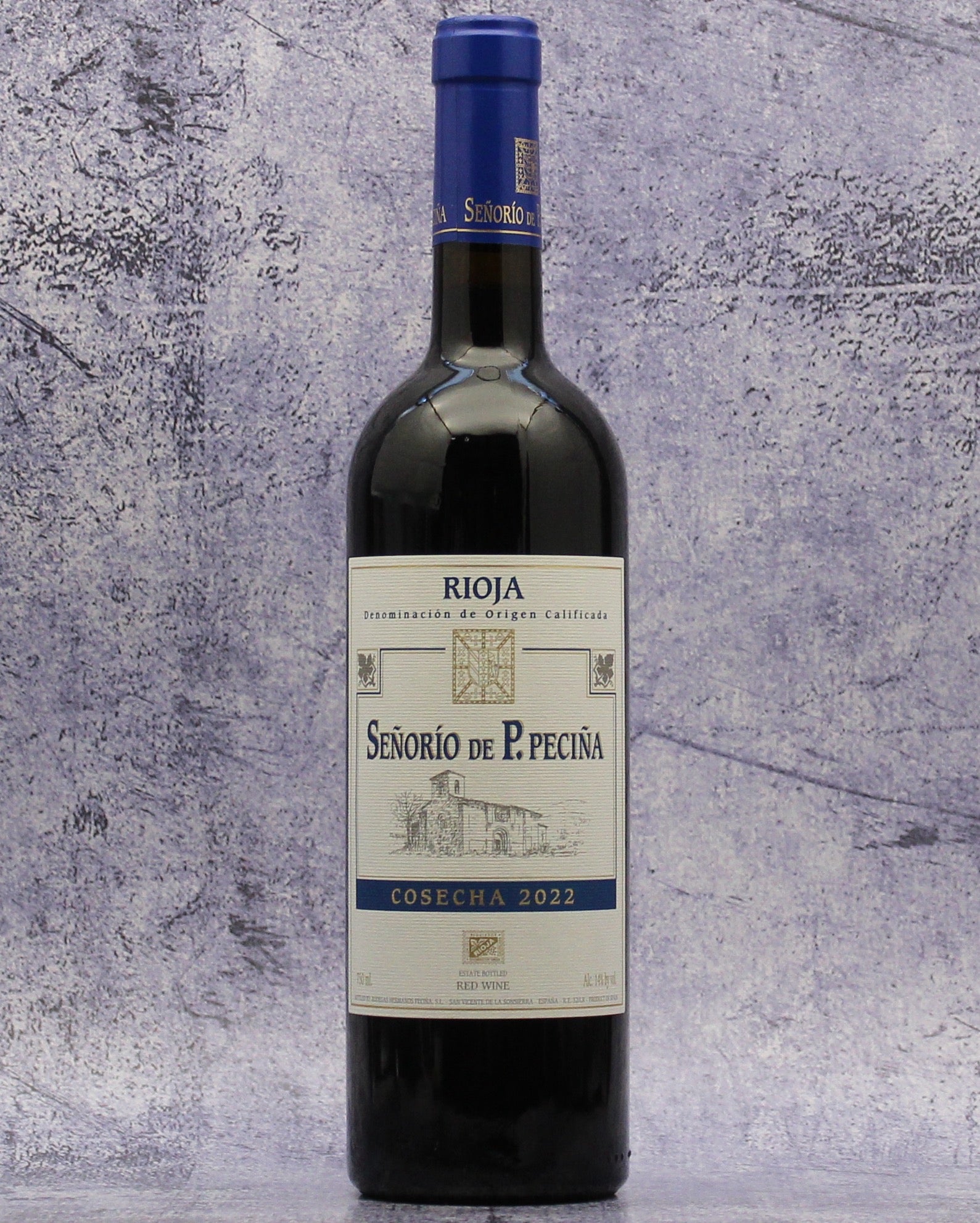Description
Blend: 95% Tempranillo, 3% Graciano, 2% Garnacha
From: Rioja Alta, Spain
Taste: Black cherries, plums, blackberries, black tea, savory herb, and barely a hint of licorice. Stainless steel aged, no oak, makes this a fruit-forward Rioja, and very expressive fruit at that. Good freshness and length for their basic red. Still a bit young and needs a short time in the glass or a decanter to open up.
Featured in The New York Times article 20 Reds Under $20 by Eric Asimov (1/30/2020)
"This is an entry-level bottle from one of my favorite Rioja producers. It’s made from the estate’s youngest vines, which are still around 25 years old, and unlike more ambitious Riojas, it is not aged in oak, which leaves it fresh, fruity and immediately accessible. It’s a balanced, refreshing expression of tempranillo from a good Rioja terroir."
Pairing: Jamón o lomo ibérico, crispy taquitos, Chorizo, Asian stir-fry with oyster sauce, tapas, pizza, Moroccan cuisine, meatballs in tomato sauce, lasagna, savory stews, nachos, tacos, lamb meatballs or burgers, chili con carne, paella, and braised pork dishes.
Youthful Rioja (like this one) also pairs extremely well with corn-based dishes. One of our faves is easy to find and love, and it’s right up the street from the wine shop! We highly recommend getting take-out pupusas from La Cabaña (also available in vegetarian options) to savor this in all its glory. If you’re a fan of the home-cooked experience, we’re sharing a recipe for homemade pupusas, courtesy of Mark Bittman. It’ll only take about 20 minutes and will yield about 6 pupusas.
About. Bodegas Hermanos Peciña is located in the heart of Rioja Alta, more specifically in Sonsierra Riojana, where the vine growing tradition dates back several centuries. In fact, throughout the area one can find numerous stone wine presses hewn out of the rock and situated next to the vineyards. Sonsierra is a prime area for the vine growing, set among the peaks of the Sierra Cantabria and the banks of the Ebro River, where the Atlantic and Mediterranean climates coexist to give a microclimate that produces unique and unbeatable grapes. The predominant grape almost in its totality is the Tempranillo, though they have some vineyards with red Garnacha and white Viura. In addition, in the oldest vineyards some Graciano and Garnacha plants are interspersed among the Tempranillo grapes.
The soil composition is of calcareous-clay with a high proportion of limestone, that allows them to obtain glycerin extract, is very important for the making of their wines, as it brings softness and volume in the mouth and small amount of potassium to get an adequate acidity.
The microclimate of the geographical location, which comprises only about 40 square kilometres, provides the wines essential features. The North wind avoids pests and rots, the daylight time has an average of 2800 hours/year and the rainfall (500mm per year) is perfect, forcing the plant to suffer water stress and getting smaller grains with higher concentrations of sugar and coloring matter. The altitude of the vineyards ranges from 475 to 600 meters, allowing a phased and uniform harvest and obtaining the benefits of the different vineyards altitude. Since they harvest from the lowest vineyard to the highest one, it takes around 25 days for the duration of a harvest campaign.
The Cosecha is made from grapes from their youngest vines, “La Veguilla” and “Valseca”, which average 27 years in age. The grapes are destemmed and crushed and macerated for 3-4 days before fermentation begins naturally with the wild yeast on the skins. Fermentation then continues for 10-12 days more. Aged in stainless steel with racking to another tank every 3 months, for a total of 6 months. No oak aging. The wines are bottled unfined and unfiltered (vegan friendly!).

